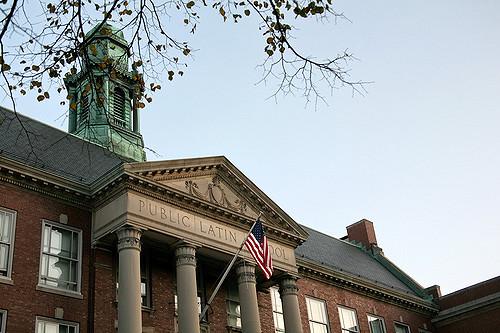
It is crucial for students to be part of a positive classroom community. Teachers need to ensure that students have all the resources necessary for learning. Teachers must ensure that students get enough sleep and exercise to stay healthy. Students feel more confident and comfortable learning in a positive environment.
A passionate special education teacher can provide individual attention in a safe and supportive setting. Teachers can ensure that students with special needs are provided with the best possible treatment. This can include helping them develop social skills and emotional growth. This can happen by working one to one with children, breaking the class up into smaller groups, and using outdoor spaces as a way to encourage socialization.
Special education teachers need to be licensed and certified. A majority of states require teachers to hold a bachelor’s or associate degree. Private schools may not require a child developmental credential. You can also take part in continuing education for special education teachers. You may be able to increase your job prospects by obtaining a master's degree.

Preschool special educators are responsible for the education of children with disabilities. This involves teaching literacy skills, modifying the preschool curriculum for students who have special needs, and recommending changes to standard school curriculum. It involves collaboration with parents, administrators and other professionals. They might also advise parents on community resources and programs that could help their children. The teacher may also check students for behavioral and learning issues. The teacher may suggest assistive technology or other tools that can be used to aid students. The teacher may also develop and implement Individual Educational Plans (IEPs) for students with disabilities.
Teachers must be familiar with child development principles and teaching methods for this age group. They must also be aware of classroom sanitation, safety guidelines, CPR/AED certificate, and CPR/AED training.
A special education teacher is responsible for teaching students with autism, visual impairments, orthopedic impairments, or other disabilities. The teacher provides instruction and supervises classroom paraprofessionals. They also monitor students for warning signs and follow protocols related to monitoring and authorization. They can also prepare classrooms for learning activities, assign assignments to volunteer teachers, and organize students' work.
Preschool special education teachers must provide classroom supervision. To ensure students receive the best care, they must follow all State and Federal guidelines. Preschool special education teachers should also keep accurate student records, collaborate closely with parents, supervise assistant teachers, and monitor students. They might also meet with parents to discuss their children's progress.

Expect to work 40 hours per week as a preschool special education teacher. They will plan and supervise classroom activities, implement students' Individual Educational Plans, and monitor students' behaviors. They will also ensure a clean classroom. They may also help students with cognitive or physical disabilities. The salary of a preschool special education teacher can vary from $30,980 up to $91,280. The median salary is $55,840.
Preschool special education teachers must have a passion for teaching children with disabilities. Teachers must be willing and able to adapt the preschool curriculum to accommodate students with disabilities. The curriculum should include developmentally appropriate activities that are aligned with the Early Learning Content Standards.
FAQ
What does it take to be a teacher early childhood?
The first step is to decide if you are interested in a career as an early childhood educator. You will need to earn your bachelor's degree if you decide to pursue a career in early childhood education. Some states require students hold a master's degree.
You may also be required to attend classes during the summer. These courses will cover subjects such as curriculum development and pedagogy (the art or teaching).
Many colleges offer associate degrees which lead to teaching certificates.
Some schools offer certificates or bachelor's degree in early childhood education. But others only offer diplomas.
Additional training may not be necessary if you intend to teach at home.
What are the various types of early childhood education available?
There are many ways that early childhood education can be described. Some of the most popular ones are:
-
Preschool - Children ages 2 to 5
-
PreKindergarten- Children from 4-6 years of age
-
Head Start/Hestart - Children aged 0-3
-
Day Care/ Daycares: Children 0-5
-
Child Care Centers for Children from 0-18
-
Family Child Care – Children aged 0-12
-
Home schooling - Children aged KG to 16.
What is homeschooling?
Homeschooling allows children to be educated at their own home by their parents. It is also known by the names private education or self-education.
For families who wish to educate their children at home, homeschooling is an excellent option. This method allows them to receive a quality education without leaving the comfort of their own home.
Children are educated by their parents from the time they are born until they reach high school. They decide what subjects and how long they should study. Everything is learned by the student on their own.
Parents decide when to begin teaching their children. Many schools recommend that children attend classes from age four until twelve years old. Some families decide to wait until kindergarten to start teaching their children.
There are many resources parents can use to help them navigate the curriculum. You can learn valuable lessons from books, videos, websites and magazines.
Many families find homeschooling works well for their busy schedules. Homeschooling allows parents to spend more time with their children, than traditional public schools.
Statistics
- They are also 25% more likely to graduate from high school and have higher math and reading scores, with fewer behavioral problems,” according to research at the University of Tennessee. (habitatbroward.org)
- Think of the rhetorical power of nineteenth-century abolitionist Harriet Beecher Stowe, Martin Luther King, Jr., or Occupy Wall Street activists with their rallying cry of “we are the 99 percent.” (bostonreview.net)
- “Children of homeowners are 116% more likely to graduate from college than children of renters of the same age, race, and income. (habitatbroward.org)
- These institutions can vary according to different contexts.[83] (en.wikipedia.org)
- Globally, in 2008, around 89% of children aged six to twelve were enrolled in primary education, and this proportion was rising. (en.wikipedia.org)
External Links
How To
How can I apply in order to be considered for a scholarship?
You must first determine if you are eligible to receive scholarship funding. Scholarships are granted to those who meet certain criteria.
You can, for example, be granted a grant if the applicant is economically disabled. If you are enrolled in vocational training courses, you may be eligible for a work-study grant. A grant is also available if your group includes a minority.
Once you have decided if you are eligible, you can begin applying.
You can apply online, in person, or over the phone. The type of scholarship you are applying for will affect the process.
You may be required to write essays on yourself and the reasons you are applying for scholarships. Some scholarships require you to write essays about yourself and why you want the money.
Most scholarships require applicants to complete an application form and to send supporting documents.
Your scholarship provider will review the information you provide. If you are chosen, you will receive an email or postal notification.
Even if you're not selected, you might still qualify for another scholarship. Contact your scholarship provider for details.